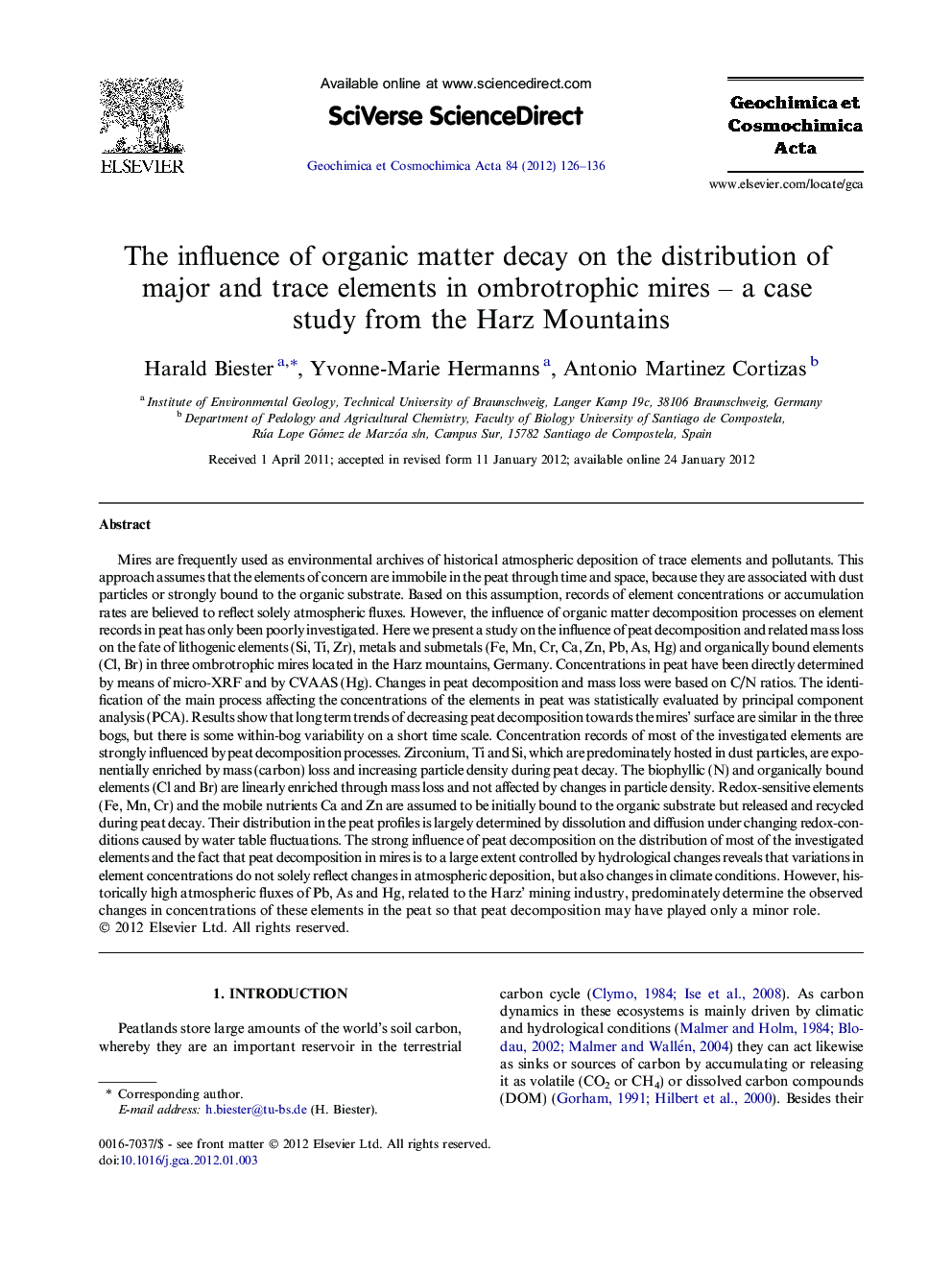| کد مقاله | کد نشریه | سال انتشار | مقاله انگلیسی | نسخه تمام متن |
|---|---|---|---|---|
| 4702938 | 1638073 | 2012 | 11 صفحه PDF | دانلود رایگان |

Mires are frequently used as environmental archives of historical atmospheric deposition of trace elements and pollutants. This approach assumes that the elements of concern are immobile in the peat through time and space, because they are associated with dust particles or strongly bound to the organic substrate. Based on this assumption, records of element concentrations or accumulation rates are believed to reflect solely atmospheric fluxes. However, the influence of organic matter decomposition processes on element records in peat has only been poorly investigated. Here we present a study on the influence of peat decomposition and related mass loss on the fate of lithogenic elements (Si, Ti, Zr), metals and submetals (Fe, Mn, Cr, Ca, Zn, Pb, As, Hg) and organically bound elements (Cl, Br) in three ombrotrophic mires located in the Harz mountains, Germany. Concentrations in peat have been directly determined by means of micro-XRF and by CVAAS (Hg). Changes in peat decomposition and mass loss were based on C/N ratios. The identification of the main process affecting the concentrations of the elements in peat was statistically evaluated by principal component analysis (PCA). Results show that long term trends of decreasing peat decomposition towards the mires’ surface are similar in the three bogs, but there is some within-bog variability on a short time scale. Concentration records of most of the investigated elements are strongly influenced by peat decomposition processes. Zirconium, Ti and Si, which are predominately hosted in dust particles, are exponentially enriched by mass (carbon) loss and increasing particle density during peat decay. The biophyllic (N) and organically bound elements (Cl and Br) are linearly enriched through mass loss and not affected by changes in particle density. Redox-sensitive elements (Fe, Mn, Cr) and the mobile nutrients Ca and Zn are assumed to be initially bound to the organic substrate but released and recycled during peat decay. Their distribution in the peat profiles is largely determined by dissolution and diffusion under changing redox-conditions caused by water table fluctuations. The strong influence of peat decomposition on the distribution of most of the investigated elements and the fact that peat decomposition in mires is to a large extent controlled by hydrological changes reveals that variations in element concentrations do not solely reflect changes in atmospheric deposition, but also changes in climate conditions. However, historically high atmospheric fluxes of Pb, As and Hg, related to the Harz’ mining industry, predominately determine the observed changes in concentrations of these elements in the peat so that peat decomposition may have played only a minor role.
Journal: Geochimica et Cosmochimica Acta - Volume 84, 1 May 2012, Pages 126–136